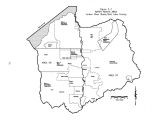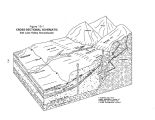| OCR Text |
Show normal operational period is November 15 to April 15 each year. Cloud seeding costs are shared by the state and local governments. Project operations have used selective seeding which is the most efficient and cost effective and produces the most beneficial results. Selective seeding, which eliminates seeding storms in which natural precipitation has little or no chance of being enhanced, is based on several criteria which determine the seedability of the storm. These criteria deal with the air mass structure of the cloud mass ( temperature, stability, wind flow and moisture content). The Wasatch Front target areas have been Big and Little Cottonwood canyons, City Creek and Parley's Creek ( See Figure 3- 2). Ground- based seeding generator are used to seed the target area. The increase in precipitation in the target area has been seven to nine percent greater than might have been predicted from nearby control observations. This increase represents 1.5 inches ( water equivalence) within the target area. 6.4 Management Problems and Needs Developmental encroachment in the flood plain is recognized by many as one of the biggest flood control/ water quality management problems along the Jordan River corridor. Development in the river's natural flood plain increases flood hazard problems, adversely affects wildlife, degrades water quality, reduces the recreational potential of the river and impedes the river's natural tendency to meander. In an attempt to address this issue, the county, in cooperation with various municipalities, has conducted a study to identify the bounds of the Jordan River's natural meander corridor. Recreational use of the canyons in the Wasatch Range and Oquirrh mountains is increasing. Without adequate management, this can adversely impact these watersheds, particularly those on the east side of Salt Lake Valley. A good monitoring program is necessary to make sure water quality is not deteriorating. 6.5 Alternatives for Management Improvement Management alternatives should be considered for potential improvements to the water supply system. Alternatives should be considered and selected on the basis of improving efficient use of the water resources. The concept of total management of surface and groundwater should be considered. Water conservation practices for all uses should also be considered. 6.6 Issues and Recommendations The biggest management issue in the Jordan River Basin is inter- agency coordination between the many federal, state, county and local municipalities which have some regulatory responsibility pertaining to management of the Jordan Riverway. Closely related is the establishment of a Jordan River Meander Corridor. Establishment of a meander corridor likely will not occur without inter- agency coordination. 6.6.1 Inter- agency Coordination Issue - Many controlling governmental agencies are involved with the Jordan River whose goals or objectives may differ or various planning efforts may be counter- productive. Discussion - Local municipalities along with county, state, and federal agencies, need to better coordinate and cooperate their various regulatory and planning efforts, and development activities. With continuing growth and development along the Jordan River, it is increasingly important for various governmental agencies to work together to set common planning goals and establish consistent regulations. The state, Salt Lake City, Salt Lake County and other interested agencies should coordinate their activities to improve the monitoring of flows and water quality from Wasatch Mountain streams and the Jordan River. State regulatory agencies should assist local governmental entities in achieving common goals. Recommendation - The federal, state and local municipalities should increase efforts to coordinate their activities through the Jordan River Sub- Basin Watershed Management Council. • 6- 7 |

















































































































































































